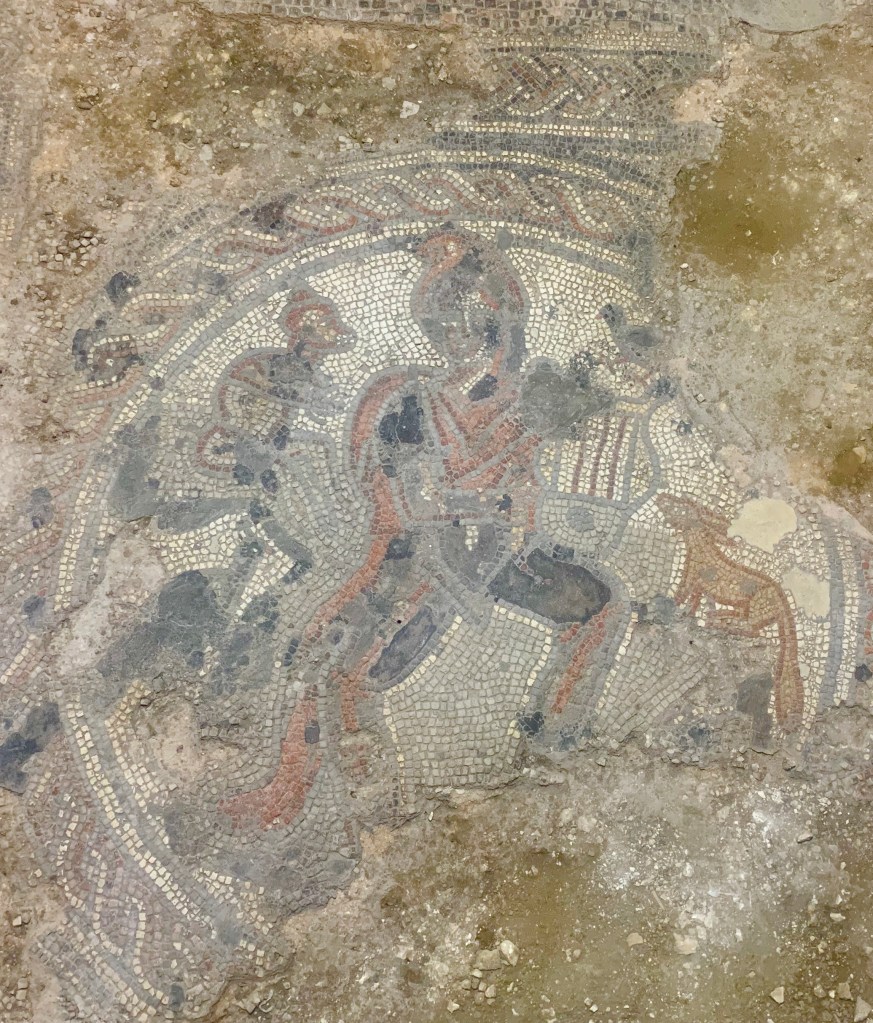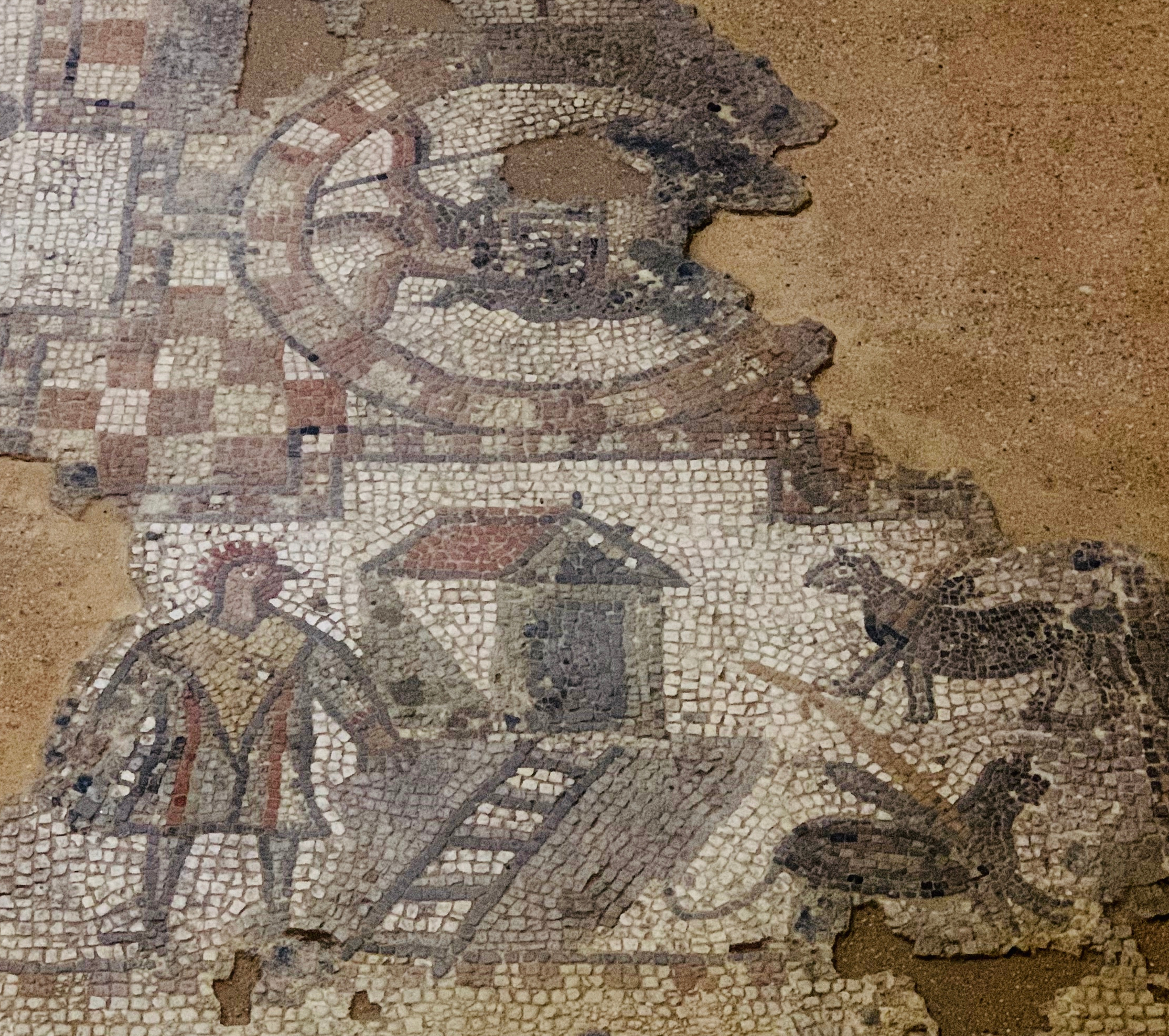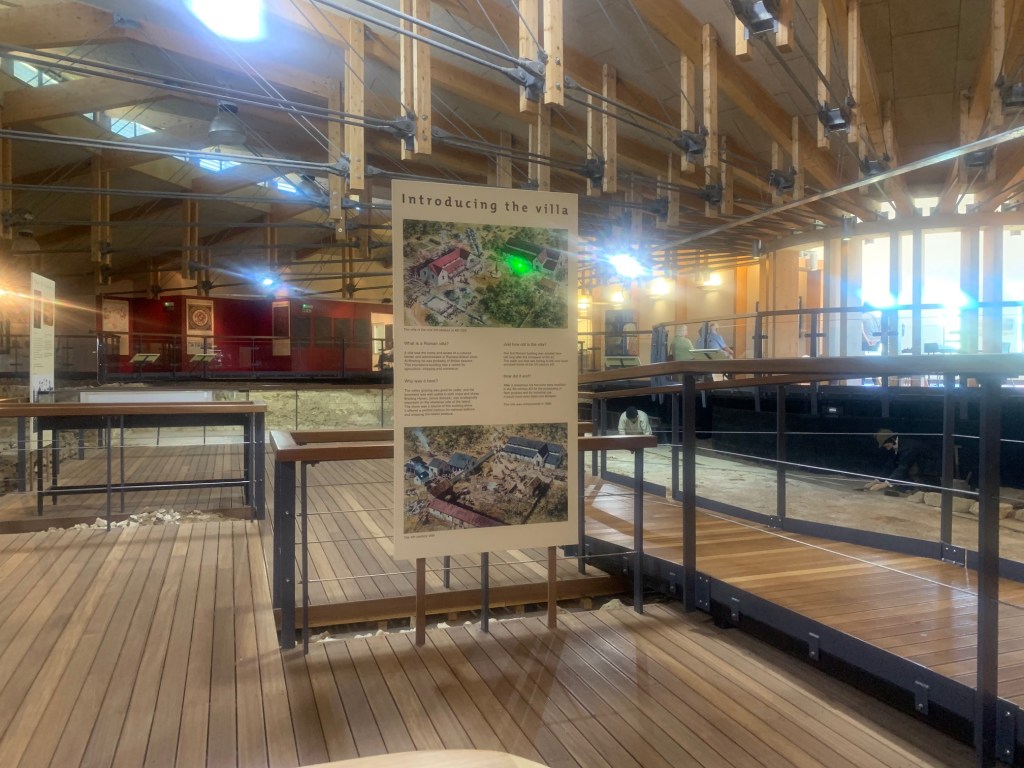Overall Impact *** 3 stars, good – if damaged – mosaics under an ultra-modern cover building, with a rather nice café attached!
Roman Features **** 4 stars, there are several mosaics in situ, unusually for a British site, so they deserve to be seen.
Reconstruction None
Access **** 4 stars, once reached (local roads narrow), very good with disabled access.
Atmosphere ** 2 stars, it’s quite hard to get the feel of the villa, although the computer reconstructions are good.
Other ***** 5 stars, keen volunteers. Any site that’s maintained on local enthusiasm and acts as a community hub deserves all our encouragement!
We were spending the night in Winchester and were looking forward to following in Vespasian’s caligae through the hill forts of the Durotriges the next day, when we happened across a tweet from @bradingromanvilla.org.uk Since we had never visited Brading Villa and it claimed to have some of the best mosaics in the country (and furthermore one of us had never crossed the Solent), we decided on the spur of the moment to visit it.
We recommend you cross the Solent too, if you have the chance…

If we are really honest, the mosaics are good but they suffered, first, from the occupation of squatters in the villa in the C5th who put in a corn-dryer in part of the floor, then started fires in the wooden structure. Then, following discovery of the mosaics were left in the open with only temporary covers by the Victorian owners for 10 years. Finally, flooding in January 2004 deposited water from the fields above the villa on to the mosaics. The water. being fertiliser impregnated, alas bleached out much of the remaining colour from the mosaics.

None of this should deter a visit. Brading has been run by a Charitable Trust since 1994 and they have, after the disaster of the floods, raised funds to erect a startlingly excellent environmentally-sensitive cover building, complete with a strong room for travelling exhibitions – the British Museum’s Hoards exhibition was on display when were were there. There are up-to-the-moment digital reconstructions of the local landscape and how a hypocaust works. There are games for child visitors and much explanation. (There are some idiosyncratic assertions in the displays – for instance on the ‘degeneracy’ of the C4th Army. ) All good fun.

The Villa was discovered in 1870 by the local farmer, Mr Munns. A local retired army officer, Captain Thorp, was looking for antiquities and he realised what this was, and he and Munns uncovered the famous ‘Gallus Mosaic’. The local landowners, the Oglanders, purchased the whole site and got in some London archaeologists to excavate the rest of the villa – none too carefully, it appears: Captain Thorp had been keeping better records!

The Villa is in three parts which, following recent re-excavations by Oxford University, have been interpreted as three successive stages in its development, reflecting the social prestige of its inhabitants. The enthusiastic and knowledgeable volunteer curator explained to us that, on the conquest of the Isle of Wight (Vectis) the leaders of the Iron Age village which was situated just east of the villa site, moved and built a villa on the South Range in the second half of the C1st. Then, around AD200 the North Range was added with a baths suite. Finally, the luxurious West Range dates from AD300 and was a final upgrade to the living conditions, complete with mosaics with classical references.

Since the disastrous flood, the site has been purchased by a Charitable Trust who operates the site in an enterprising fashion. There is a well-stocked gift shop ranging from the usual Roman souvenirs up to replica mosaics, should you fancy upgrading your dining room or bathroom! They also have a large café/restaurant which was doing a roaring trade in Sunday lunches. And on Saturday nights, mainstream movies are screened there – good for them. The cover building is a modern architectural masterpiece designed to touch the site as little as possible and spans the area spectacularly. Finally, the Trust has built a secure gallery so that visiting exhibitions can be accommodated.



